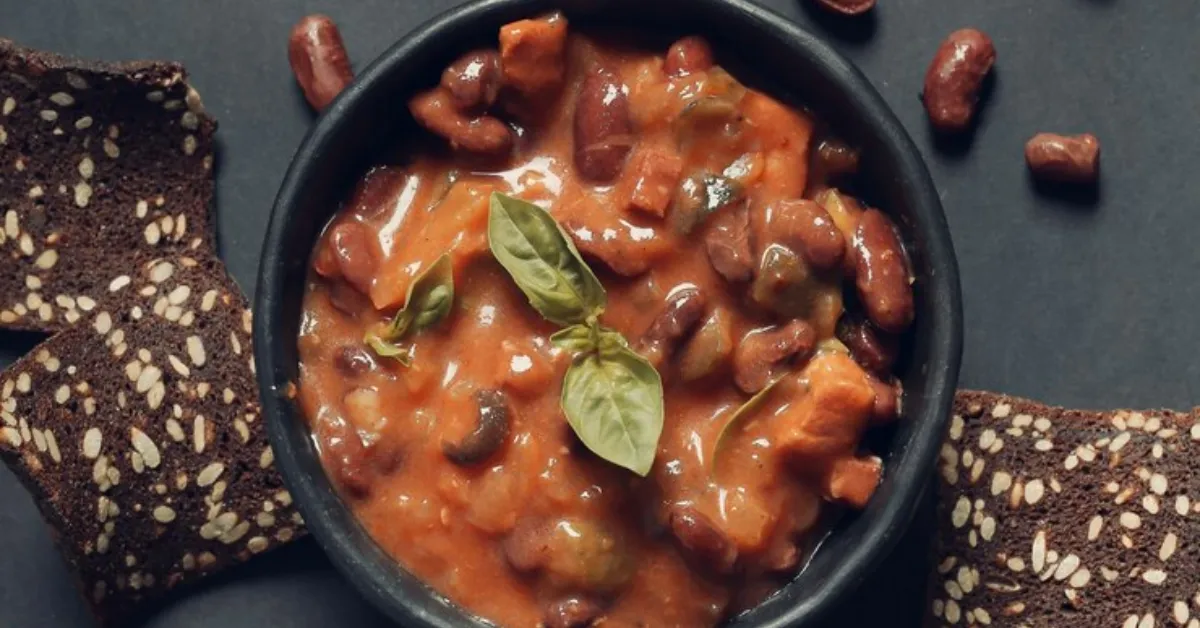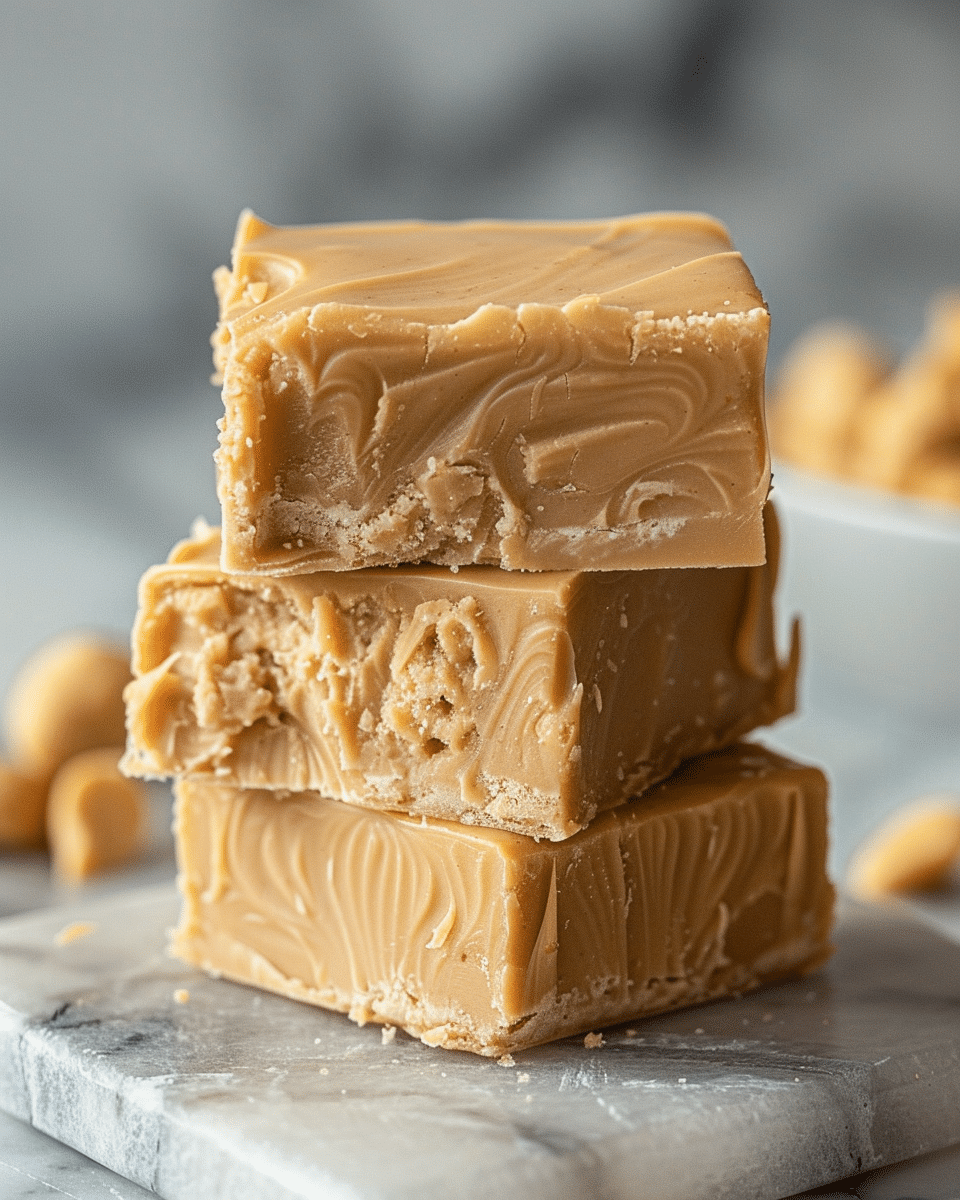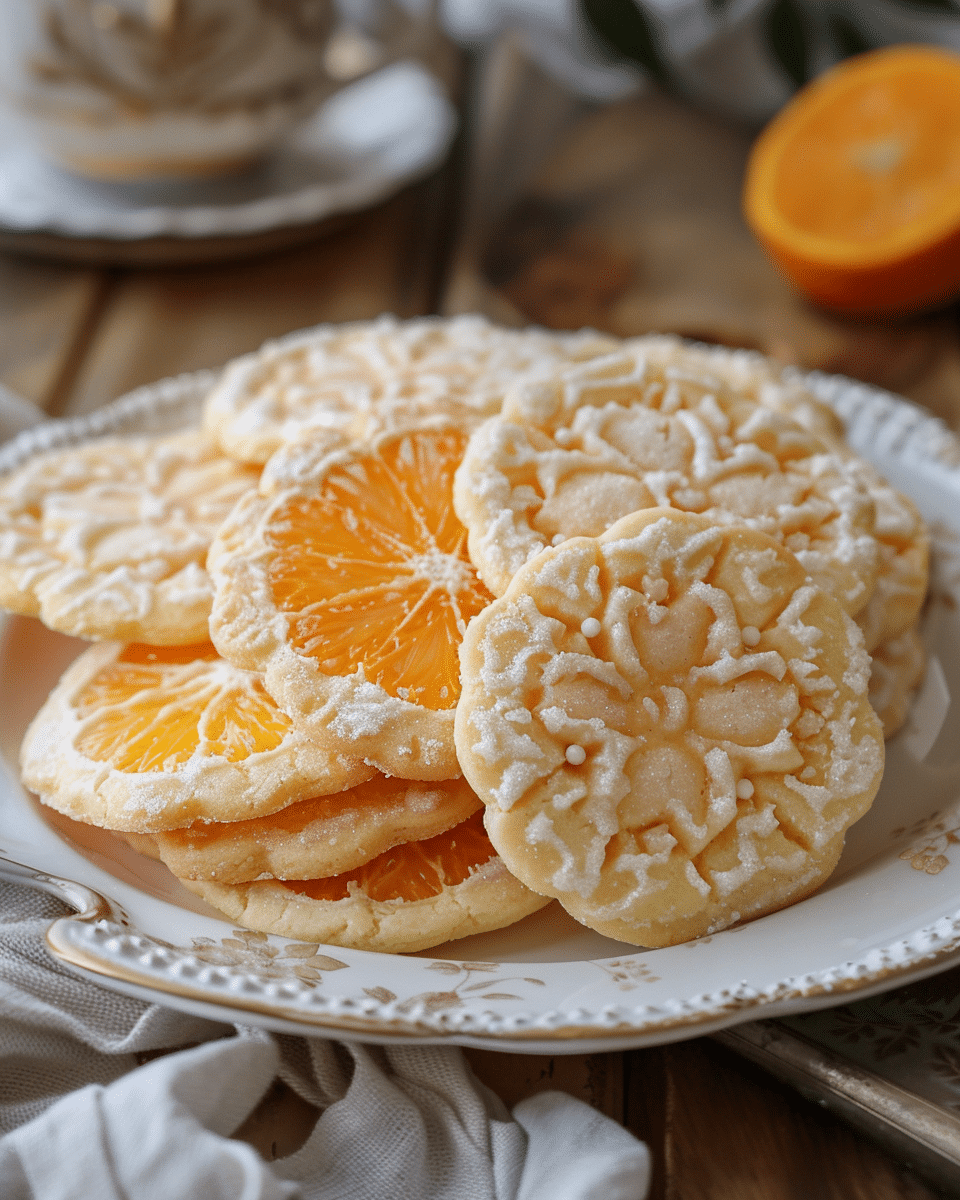Everyone has a favorite comfort food, something familiar and delicious. For many, it’s the humble baked bean. But have you ever thought about adding a twist? Baked beans are loved by many people around the world. When you add mustard, which has a strong taste, it makes the beans taste even better. Both of these foods have been around for a long time and are favorites in many homes. In this article, we’ll dive into why this pairing is so special and how it can elevate your next meal.
Why Put Mustard In Baked Beans?
Adding mustard to baked beans is more than just an addition of a condiment; it’s about a transformative culinary experience. The introduction of mustard doesn’t just revolutionize the dish’s flavor profile, but it also significantly impacts the bean’s texture. The result? A creamier, more cohesive texture that elevates the beans, making them even more delightful to the palate.
Benefits of Adding Mustard to Baked Beans
Adding mustard to baked beans offers a variety of benefits, both in terms of flavor and potential health properties. Here’s a breakdown of these benefits:
Enhanced Flavor:
- Depth and Complexity: Mustard, whether in seed or sauce form, can introduce a tangy and spicy element to baked beans, enhancing the overall depth of flavor.
- Balanced Sweetness: Baked beans recipes often incorporate sweet elements like molasses or brown sugar. The sharpness of mustard can counterbalance this sweetness, creating a more rounded flavor profile.
Improved Texture:
- Thickening Agent: When mustard seeds are added, they can act as a thickening agent, providing a richer consistency to the sauce in baked beans.
Nutritional Benefits:
- Low in Calories: Mustard is generally low in calories, making it a good addition for those watching their calorie intake.
- Rich in Nutrients: Mustard seeds are a source of essential nutrients like selenium, magnesium, and omega-3 fatty acids.
Health Benefits:
- Antioxidant Properties: Mustard seeds have antioxidant properties, which can help fight against free radicals in the body.
- Anti-inflammatory Effects: The presence of compounds like curcumin in some types of mustard can have anti-inflammatory effects.
- Digestive Aid: Mustard seeds can stimulate the production of saliva, up to eight times more than normal, aiding in digestion.
Culinary Versatility:
- Variety: There are many types of mustard, from Dijon to whole grain to yellow, each offering a unique flavor profile. This allows for customization based on personal preference or specific recipe requirements.
- Pairing with Other Ingredients: Mustard pairs well with many ingredients commonly used in baked beans, like onions, garlic, and smoked meats, further enriching the overall taste.
Affordability and Availability:
- Mustard, in both seed and sauce form, is generally affordable and widely available in grocery stores. This makes it an accessible ingredient for most people.
Traditional Authenticity:
- Some traditional baked bean recipes from various cultures incorporate mustard, so using it can add an authentic touch to certain regional dishes.
Natural Preservative:
- Mustard has mild preservative qualities, which can potentially help in extending the shelf life of homemade baked beans.
Incorporating mustard into baked beans is a simple way to introduce additional layers of flavor, nutritional benefits, and a touch of tradition to the dish. Whether you prefer the pronounced tang of Dijon or the milder flavor of yellow mustard, experimenting with this ingredient can transform and elevate your baked beans.
Popular Recipes Featuring Mustard and Baked Beans
Mustard and baked beans make a classic pairing. Below are two popular recipes that feature both ingredients:
1. Traditional Mustard Baked Beans:
Ingredients:
- 4 cups navy beans (or another preferred type)
- 1 onion, finely chopped
- 3 tbsp molasses
- 2 tsp salt
- 1/4 tsp ground black pepper
- 1/4 tsp dry mustard powder
- 1/2 cup ketchup
- 1 tbsp Worcestershire sauce
- 1/4 cup brown sugar
- 4 cups water
- 2 strips of bacon (optional)
Instructions:
- Soak beans overnight in enough water to cover them. Drain and rinse.
- Preheat oven to 325°F (165°C).
- In a large pot, combine beans, molasses, salt, pepper, dry mustard, ketchup, Worcestershire sauce, and brown sugar. Stir until well mixed.
- Transfer the mixture into a baking dish. Pour in the water.
- Place the bacon strips on top (if using).
- Cover the baking dish with a lid or aluminum foil.
- Bake for 3-4 hours until beans are tender and the sauce has thickened. Check occasionally, and add more water if necessary.
- Remove the cover during the last 30 minutes of baking to brown the top.
- Serve hot and enjoy!
2. Spicy Mustard BBQ Baked Beans:
Ingredients:
- 4 cups canned baked beans
- 1/4 cup Dijon mustard
- 1/4 cup BBQ sauce
- 1/2 cup chopped onions
- 1 jalapeño pepper, finely chopped (remove seeds for less heat)
- 1 tbsp olive oil
- Salt and pepper to taste
Instructions:
- Preheat oven to 350°F (175°C).
- In a skillet, heat olive oil over medium heat. Sauté onions and jalapeño until softened.
- In a large mixing bowl, combine sautéed onions and jalapeño with baked beans, Dijon mustard, BBQ sauce, salt, and pepper. Mix until well combined.
- Transfer the bean mixture to a baking dish.
- Bake in the preheated oven for 25-30 minutes or until bubbly and slightly caramelized on top.
- Serve hot with your favorite grilled meats or as a hearty side dish.
These recipes can be adjusted based on personal preferences, such as adding more mustard for a tangier taste or incorporating other ingredients like bell peppers or smoked sausage for added flavor and texture. You can also check Grandma Browns Baked Beans Recipe.
The Science Behind Mustard in Baked Beans
The addition of mustard to baked beans isn’t just about adding flavor; it’s also rooted in the science of cooking. Let’s delve into the reasons mustard is often used in baked beans:
Flavor Enhancement:
At its core, the most obvious reason to add mustard to baked beans is the taste. Mustard, whether in seed or prepared form, adds a tangy, spicy note that complements the sweetness of the beans and any added sugars or syrups.
Emulsification:
Mustard seeds contain mucilage, a type of soluble fiber that acts as a natural emulsifier. In sauces or bean mixtures, it helps in binding together ingredients that would usually separate, like oil and water. Although baked beans aren’t necessarily emulsified, the mustard can help create a smoother texture and mouthfeel.
Preservation:
Historically, mustard has been used as a preservative. The compounds in mustard have antimicrobial properties, which can help prevent spoilage in food preparations. While modern baked beans are typically canned or refrigerated to ensure their longevity, the addition of mustard can still offer some preservative qualities.
pH Balancing:
Mustard is acidic. When added to baked beans, it can help balance the pH of the dish. Balancing the acidity can influence the final flavor of the dish, making certain flavors more pronounced while mellowing out others. It also has potential implications for the texture and color of the beans, as the pH can influence how ingredients interact.
Enhancement of Other Flavors:
Mustard, especially when combined with other ingredients like brown sugar or molasses (common in baked beans), can amplify the flavors of the dish. The spicy and pungent compounds in mustard can make sweet flavors taste even sweeter by contrast.
Maillard Reaction:
The Maillard reaction is a form of non-enzymatic browning responsible for the delicious flavors in seared meats, toasted bread, and other cooked foods. The reaction requires proteins and sugars. Mustard, especially when in prepared form, might contain small amounts of these necessary components, which can assist or augment the Maillard reaction, especially if the baked beans are being cooked at higher temperatures (like baking).
Texture:
Depending on how it’s used, mustard can slightly alter the texture of baked beans, making the sauce thicker and more cohesive.
In summary, while mustard is often added to baked beans for its taste, its inclusion also plays a role in the texture, preservation, and overall balance of the dish.
Cultural Significance of Mustard in Baked Beans
Mustard is a common ingredient found in various recipes around the world, including baked beans. The cultural significance of mustard in baked beans, as with many culinary ingredients, is deeply rooted in historical, regional, and economic contexts. Here’s a closer look at this:
Historical Context:
Mustard seeds have been used for thousands of years, with records of its cultivation going back to ancient India and China. As trade routes expanded, mustard made its way to Europe and subsequently to the Americas.
Regional Variations:
The use of mustard in baked beans varies by region. In certain parts of the United States, particularly in the Northeast, baked beans are often made with mustard, molasses, and sometimes salt pork or bacon. This is different from other regional variations of baked beans, such as those found in the UK or Canada.
Economic Considerations:
Mustard is not just a flavoring agent but also serves as a preservative and emulsifying agent. In times when refrigeration was not common, ingredients that helped preserve food played a crucial role in cuisine. Mustard could enhance the shelf life of certain foods, including sauces and condiments.
Flavor Profile:
Mustard adds a tangy, spicy depth to baked beans, complementing the sweetness of molasses or brown sugar often used in the dish. This balance of sweet and spicy is a hallmark of many traditional recipes, satisfying a broad range of palates.
Cultural Fusion:
As with many dishes, baked beans have undergone numerous transformations as they’ve been adapted by different cultures. The addition of mustard is a testament to the blending of culinary traditions. For instance, when European settlers came to America, they adapted indigenous food preparation methods to their tastes, leading to the creation of dishes like Boston baked beans, which incorporate mustard.
Traditional Celebrations:
Baked beans with mustard have become a staple in certain cultural celebrations and gatherings, especially in the U.S. For instance, they are a popular dish during Fourth of July celebrations, cookouts, and other communal events, reflecting the melding of diverse culinary influences.
In summary, mustard in baked beans is not just a culinary choice; it reflects a rich tapestry of history, economics, and cultural fusion. This seemingly simple ingredient offers a glimpse into the broader story of human migration, trade, and cultural exchange.
Varieties of Mustard to Use in Baked Beans
Mustard is a popular addition to baked beans because of its tangy and sharp flavor that complements the sweet and smoky taste of the beans. Here are some varieties of mustard that you can use in baked beans:
Yellow Mustard (American Mustard):
This is the most common type of mustard used in the US. It’s bright yellow and has a mild and somewhat tangy flavor. It’s great for a classic baked beans recipe.
Dijon Mustard:
Originating from Dijon, France, this mustard has a smooth consistency and a sharp, robust flavor. It can add a gourmet touch to your baked beans.
Whole Grain Mustard:
This is mustard in which the seeds are not fully ground, resulting in a textured and rustic appearance. It not only adds flavor to the dish but also a nice visual contrast with its speckled appearance.
Spicy Brown Mustard:
As the name suggests, this mustard has a kick to it. It’s spicier and more intense than yellow mustard and can be used for those who prefer their baked beans with a bit more heat.
Honey Mustard:
For those who enjoy a sweeter taste, honey mustard provides a balance of sweet and tangy flavors. It can be used in baked beans recipes where a touch of sweetness is desired.
Horseradish Mustard:
This is a blend of mustard and grated horseradish. It’s sharp and has a distinct bite, making it suitable for those who enjoy a bit of pungency in their dish.
English Mustard:
This is hotter and more pungent than the American yellow mustard. A little goes a long way, so be cautious when using it.
Stone-Ground Mustard:
Similar to whole grain mustard but ground a bit more. It has a coarser texture and a deep, robust flavor.
Bavarian Sweet Mustard:
This German mustard is made with a mix of sweeteners and spices, making it ideal for those who want a unique sweet-and-tangy flavor in their baked beans.
When choosing a mustard for baked beans, consider the overall flavor profile you’re aiming for. For a traditional taste, stick with yellow mustard. If you want to elevate the dish or introduce a unique twist, experiment with the other varieties. Always start with a small amount, taste, and adjust as needed.
Cooking Tips for Mustard and Baked Beans
They are both versatile ingredients that can be used in a variety of dishes. Here are some cooking tips for each, as well as ways to incorporate both into your meals:
Mustard:
- Type Matters: There are several types of mustard available, such as Dijon, whole grain, yellow, and spicy brown. Each has its unique flavor and can make a difference in the final outcome of your dish. Choose the right type for your recipe.
- Pairing with Meats: Mustard is great for marinating meats, especially pork and chicken. It can also be mixed with honey or maple syrup for a sweet and tangy flavor.
- Vinaigrettes: Whisk mustard with olive oil, vinegar, salt, and pepper to create a simple vinaigrette for salads.
- Sauces: Mustard can add depth to sauces. A touch of Dijon mustard in a creamy sauce can elevate the flavor.
- Storage: Keep opened mustard containers in the refrigerator to maintain their flavor.
Baked Beans:
- From Scratch: Starting with dried beans allows you to control the flavor and sodium. Soak beans overnight, rinse, and then slow-cook them with tomato sauce, molasses or brown sugar, and your choice of spices.
- Flavor Variations: Experiment with flavors by adding ingredients like smoked bacon, onions, bell peppers, or even a splash of bourbon.
- Texture: If you prefer thicker baked beans, allow them to simmer uncovered for longer, or add a cornstarch slurry.
- Side Dish: Baked beans are an excellent side for BBQ dishes. They complement grilled meats and sandwiches.
- Incorporate in Meals: Baked beans can be added to salads, used as a topping for baked potatoes, or incorporated into casseroles.
Combining Mustard and Baked Beans:
- BBQ Beans with a Tangy Twist: Upgrade your regular baked beans by infusing them with a unique sauce for that extra zing. Spicy brown or Dijon varieties work especially well.
- Mixed Bean Salad: Combine baked beans with other varieties like kidney or black beans, add diced onions, bell peppers, and dress with a tangy vinaigrette for a delightful salad.
- Unique Bean Dip: Blend your beans with garlic and spices to make a different dip suitable for chips or veggies.
- Bean Delight Sandwich: Toast some bread, spread some sauce, add beans, lettuce, and sliced tomatoes for a quick bite.
Remember, the key to great cooking is experimentation. Don’t be afraid to tweak recipes to suit your taste preferences. Enjoy your culinary journey with mustard and baked beans!
FAQs
Which country eats the most baked beans? The United Kingdom. They’re a staple in traditional British breakfasts, making the UK the top consumer.
Do baked beans contain mustard? Not always. While some recipes include mustard for flavor, always check the ingredients list to be certain.
Why add mustard? Mustard adds a unique tanginess, depth, and enhances the overall flavor of dishes.
Why do people put mustard on food before cooking? Applying mustard before cooking imparts a richer taste, aids in marination, and enhances both aroma and flavor.
Conclusion and Final Thoughts
Mustard in baked beans isn’t just a fad; it’s a game-changer. By understanding its impact on taste, texture, and nutrition, we can truly appreciate the culinary genius behind this pairing. It’s a testament to the limitless possibilities in the world of cooking. So, the next time you whip up some baked beans, don’t forget that dollop of mustard!








